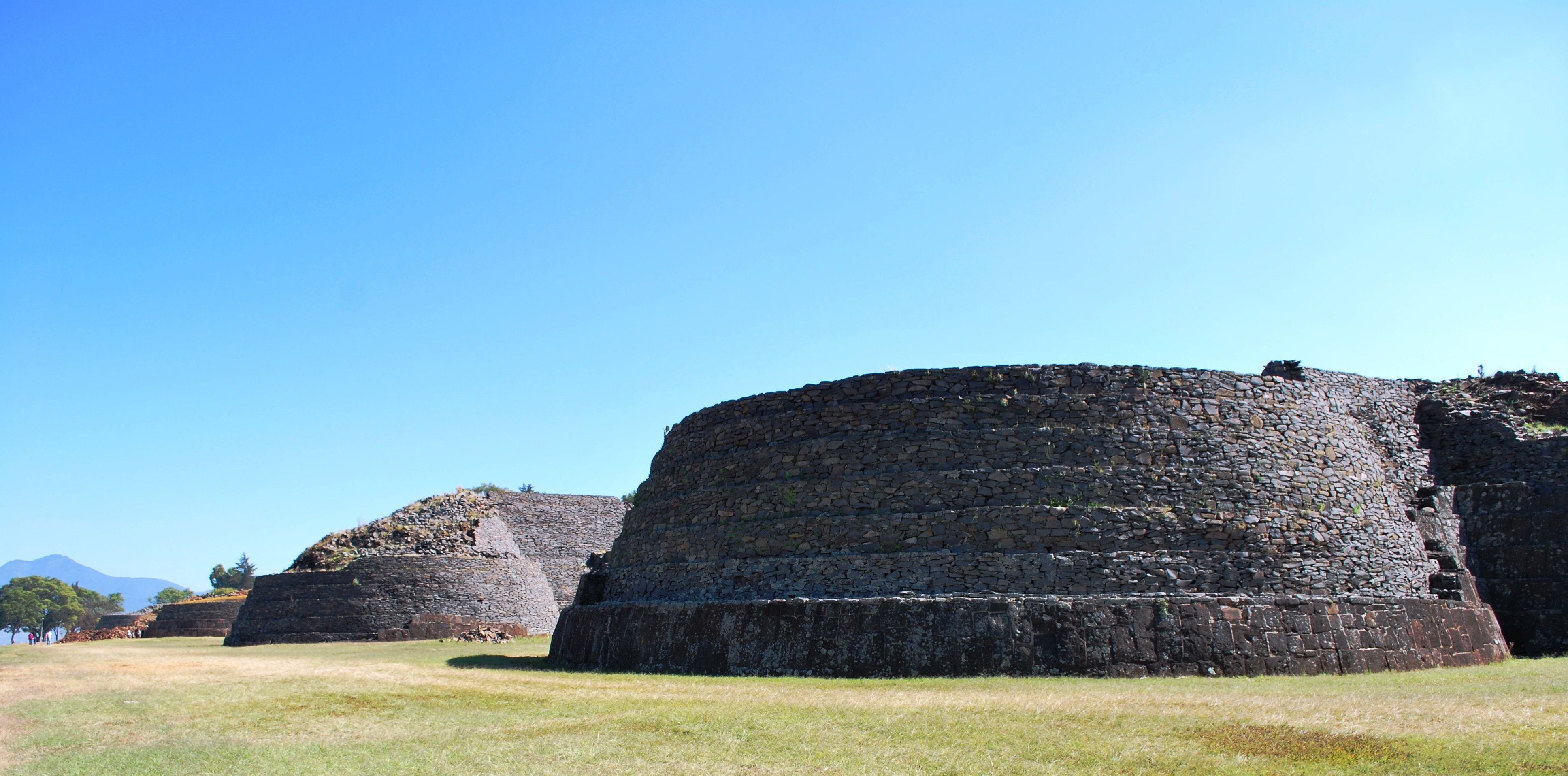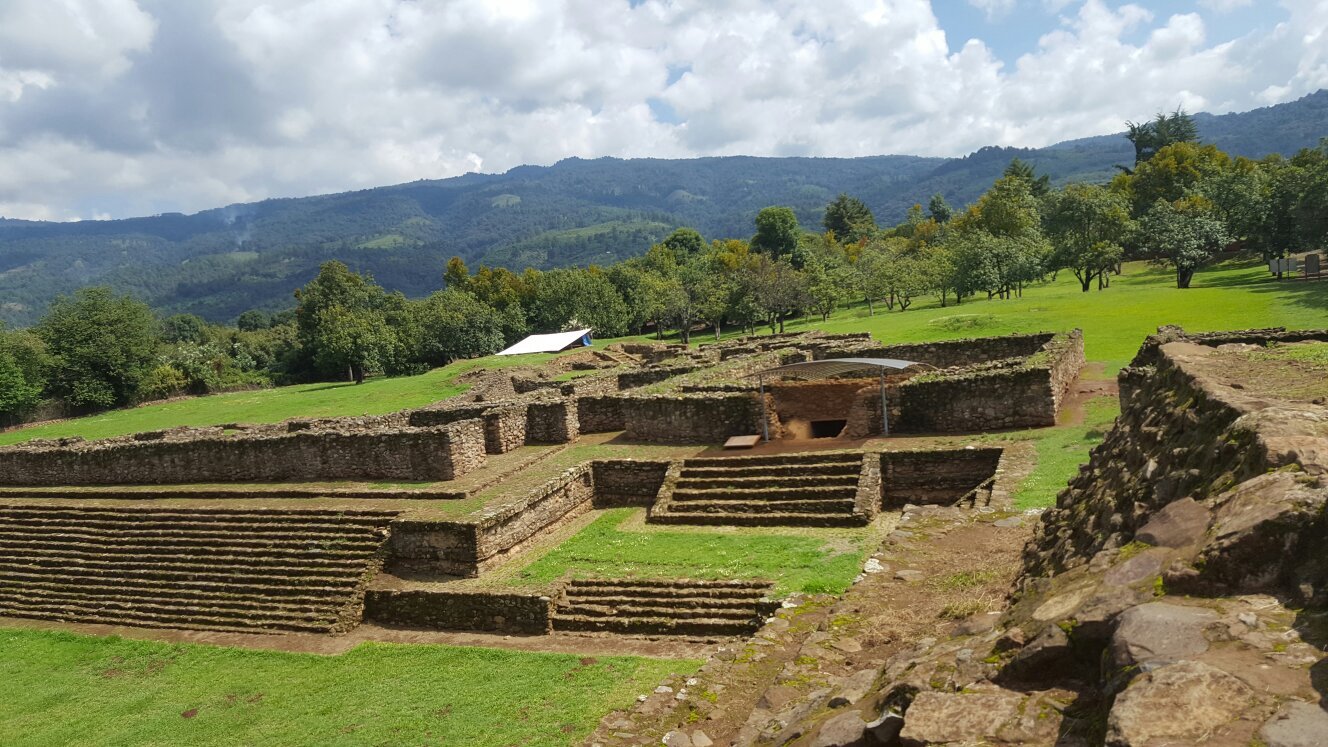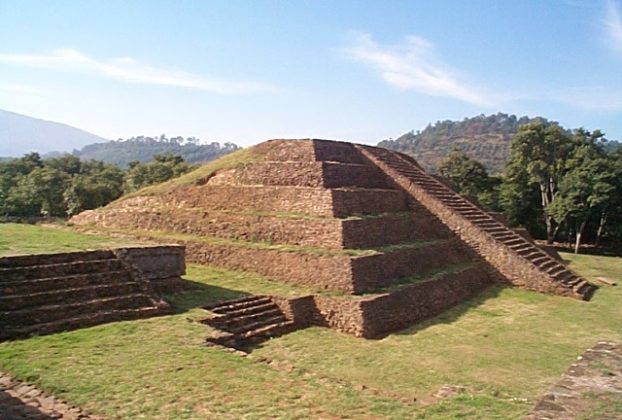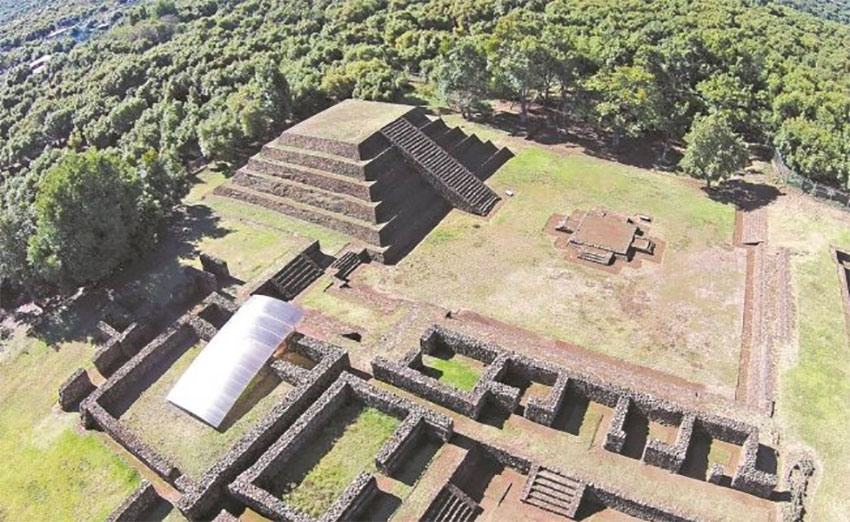which was independent of the Aztecs, had pyramids there totally different from the Aztecs, and became so shocked to learn I had never heard of them, and there will be a lot to find out about them! Good grief! There is so wildly much I need to know! I have been so under informed about a very important country all my life.
Here is a photo of some totally different pyramids:






ETC., ETC., ETC., ETC.
Here's a Wikipedia about the site:
Tzintzuntzan (Mesoamerican site)
Tzintzuntzan was the ceremonial center of the pre-Columbian Purépecha capital of the same name. The name comes from the Purépecha word Ts’intsuntsani, which means "place of hummingbirds."[1][2] The site includes at least 1,000 archaeological features in an area that is at least 1,075 hectares.[3]
After being in Pátzcuaro for the first years of the Purépecha Empire, power was consolidated in Tzintzuntzan in the mid 15th century. The empire continued to grow and hold off attacks by the neighboring Aztec Empire, until the Spanish arrived. Not wanting to suffer the destruction that the Aztec capital Tenochtitlan did, the emperor in this city surrendered to the Spanish.[4] Eventually, much of the site and especially its distinct five rounded pyramids called yácatas were destroyed and the city almost completely abandoned.[5]
Due to lack of interest in the old Purépecha dominion, excavation of this site did not begin until the 1930s.[4] Its largest construction are the five yácata pyramids, which line up looking out over Lake Pátzcuaro. The other is the large Grand Platform excavated into the hillside on which the yácatas and other buildings rest.[1] Today the site is still used for events such as the Festival Cultural de Fin de Año.[6]
Capital of the Purépecha Empire
Tzintzuntzan was the capital of the Purépecha Empire when the Spanish arrived in 1522.[7] As these people did not leave written records, what we know of this city and its empire come from Spanish writings and archeological evidence.[4][8] The main Spanish document is called the Relación de las ceremonias y ritos población y gobierno de los indios de Michoacán, written by Jerónimo de Alcalá based on what he was told by the Purépecha elite in 1539.[9] Other writings that refer to the capital include Hernán Cortés’ fourth letter in 1524, “La información de Don Vasco de Quiroga, sobre el asiento de su iglesia Catedral,” from 1538, “Tratado curioso y doctor de las cosas de la Nueva España” by Antonio de la Ciudad Real in 1590, “Relaciones goegráficas; las Crónica de la orden de Nuestro Seráfico Padre San Francisco, provincia de San Pedro y San Pablo de Mechoacan in la Nueva España” by Alonso de la Rea in the 17th century and the “Crónica de la provincia de los santos apóstoles San Pedro y San Pablo de Michoacán” by Pablo Beaumont.[10]
For a number of reasons, the Purépecha origins are shrouded in mystery. Much of Purépecha culture is very distinct from other Mesoamerican cultures. The Purépecha language has more in common with Zuni in the southwest U.S. and Quechua in Peru and is unrelated to any other Mesoamerican language.[4] Jeromimo de Acalá's collection of stories from Purépecha elders states that these people migrated to the Lake Pátzcuaro region, developing alliances among the people who were already here. Eventually, they became the dominant group and established their city at Tzintzuntzan.[11] According to collected evidence, the Purépecha people may have begun to dominate the Pátzcuaro Lake area as early as 1000 CE, but definitely by 1250.[4]
More:
https://en.wikipedia.org/wiki/Tzintzuntzan_(Mesoamerican_site)
 = new reply since forum marked as read
= new reply since forum marked as read




